Ishmael Mnisi
President Cyril Ramaphosa’s expressive analogy on Tintswalo as a measure of government’s success and transformation progress in a democratic state is an experienced South African reality.
While some opposing views frowned upon president Ramaphosa’s State of the Nation Address (Sona), it would, however, be disingenuous for anyone to suggest that the “revolutionary vehicle is not yet in motion”, and that we do not have real beneficiaries of the policies of our democratic government.
If truth be told, our democratic government is hard at work changing the lives of many South Africans.
In the past 30 years of our democratic state, a lot has changed for most of the working and poor families in South Africa, including in the provision of education, be it basic or post-school, and training.
The government has established strong institutions to protect and advance the fundamental freedoms and human rights of all South Africans.
Millions of South African lives have been transformed through the provision of necessities that enable the creation of opportunities that did not exist in the past. The story of Tintswalo resonates deeply with many South Africans who have unplugged the agonising cord of poverty in their homes. It is a story that will forever find its revolutionary voice and power in those who refuse to overlook what has been done.
This is articulated succinctly through social media hashtags such as “#IamTintswalo”.Delving into the milestones of our democratic government’s post school education and training funding, among others, through the National Student Financial Aid Scheme (NSFAS), one can’t ignore but stand to appreciate the strides made throughout the years.
It is through telling good stories like that of Tintswalo that many would know that NSFAS has funded more than five million students since its inception.
Since the early years of the Tertiary Education Fund of South Africa, the funding scheme has grown from funding 49% of black students to almost 71% today.
In 1991, the scheme funded at least 7 000 students with a budget of almost R21-million.In 2023, NSFAS funded 764 421 students and disbursed R46,592,801,446 in both universities and TVET colleges.
Students who are approved for the NSFAS funding are covered for registration, tuition, food, accommodation, transport, learning materials and personal care allowances.
This is indeed a comprehensive wraparound student funding, which is second to none in the world.
For the 2024 academic year, NSFAS will spend almost R50-billion on more than 1.1 million students to enable more expanded access to higher education for the children of the working class and the poor.
Adding to this, to maximise access to education and to increase the number of our Tintswalos, the government through the Department of Higher Education and Training, has since implemented the first phase of the Comprehensive Student Funding model.
Again, this loan scheme is administered by NSFAS to cater for the “missing middle” students.Tintswalo inspires hope in many of our youth and remains an enabler of change and a precious treasure of government that serves as a barometer of government’s developmental efforts over 30 years of our democratic government.
No matter how bitter the appreciation pill could be to swallow, it is important to concede that the transformation vehicle is already in motion.
- Mnisi is a spokesperson for NSFAS.




